The Iranian city of Shiraz is home to the historical masterpiece called the Arg of Karim Khan or Arg-e Karim Khan(Shiraz historical places), otherwise known as the Karim Khan Citadel in English, which serves as a monument to the rich cultural legacy of this age-old region. Due to the fact that it bears the name of the Zand Dynasty’s founder, Karim Khan Zand, this citadel—also referred to as the Karim Khan Citadel—is a spectacular representation of the dynasty. A must-see location for anybody seeing Iran’s beauties is The Arg, with its distinctive architectural elements and considerable historical significance.
Who Was Karim Khan Zand?
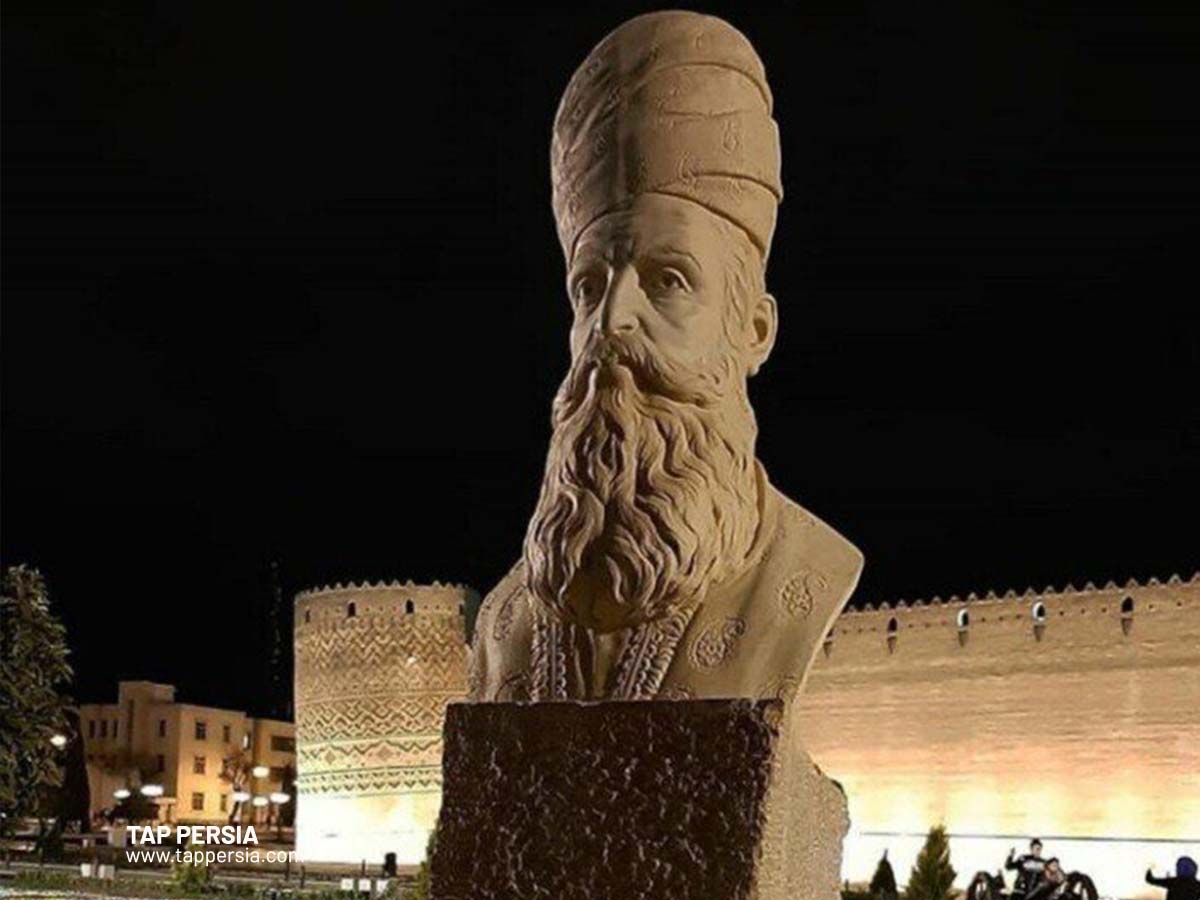
An extraordinary occurrence in Iranian history may be said to have occurred under Karim Khan Zand’s administration. He placed a high value on the well-being of the populace. For his kind actions, he deserves credit.
In the Malayer village, he was born in 1086. 1157 saw his death at Shiraz. In addition to founding Zandieh, he ruled Iran justly from 1163 until 1193.
His heirs fought often after Nader Shah Afshar’s passing. Iran entered a period of severe political and economic instability, and as a result of the central government’s lack of authority, the Khans and other regional tyrants rose up in a revolt to take over more territory and establish themselves as the king. Suleiman II, Shah Rukh, Ibrahim Khan, and Ali Qoli Khan all had brief periods of power.
Mohammad Hassan Khan Qajar in Astarabad, Azad Khan Afghan in northern Iran, and Ahmad Shah Durrani, a rare Afghan commander in eastern Iran, all tried to set up an administration and take control of the country. Karim Khan Zand aimed to take control during these upheavals as well.
Chaos existed when Karim Khan Zand assumed control, and during his rule it was temporarily put to a stop and a semblance of quiet was established. The political institutions were exceedingly flimsy and chaotic under Nader Shah Afshar, Rezagholi had simply blinded his successor, and as a result of these two issues, everyone governed in a territory where the central authority essentially did not exist.
The Arg of Karim Khan’s Historically Significant Journey
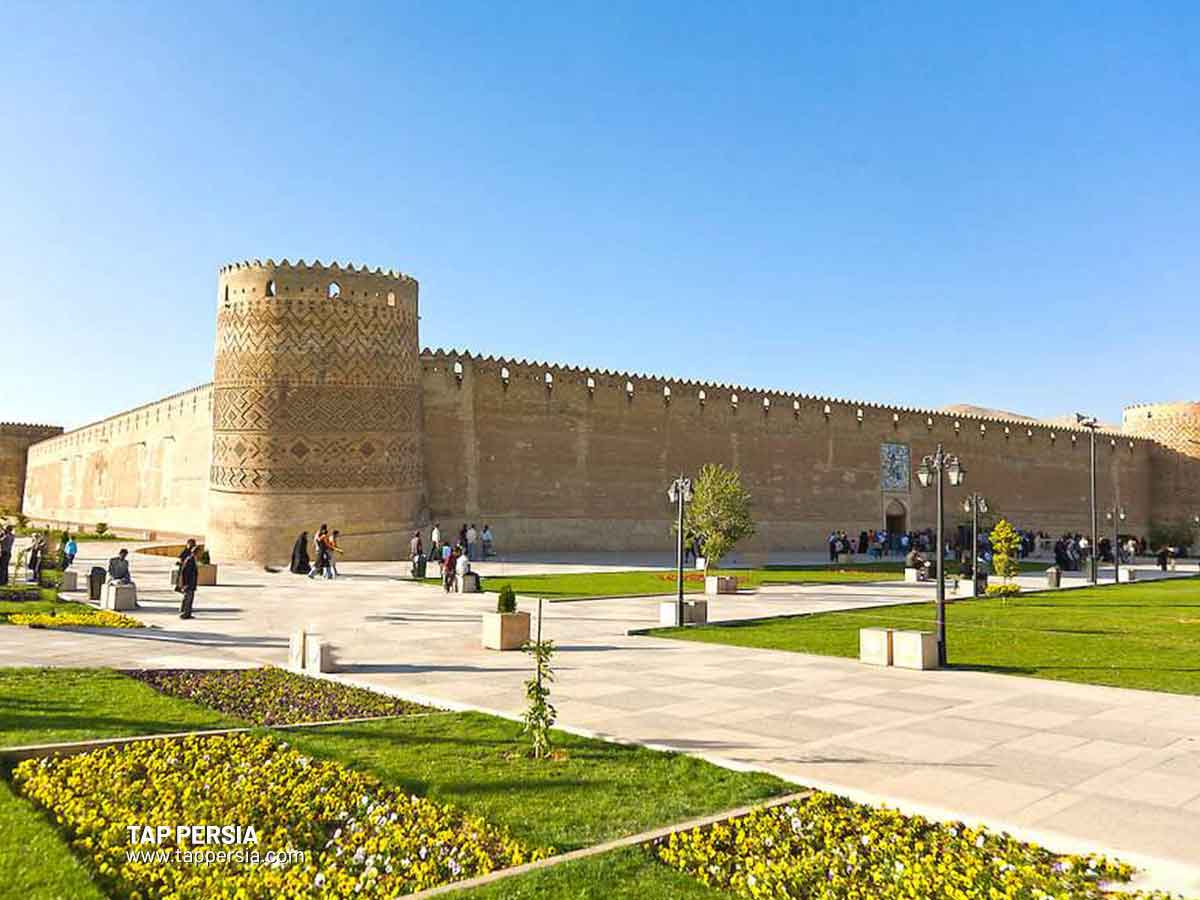
The Arg-e Karim Khan has been a quiet watcher of the shifting rulers and their impacts as Iranian history has ebbed and flowed. Its history is intricately entwined with the kings who lived inside its walls and each left their own mark on this beautiful building. Here are some details regarding the Arg of Karim Khan during several historical dynasties:
The Arg of Karim Khan During the Zand Dynasty
The Arg-e Karim Khan, built in the 18th century under Karim Khan Zand’s authority, came to represent the might and dominance of the Zand Empire. The top architects of the day were asked by Karim Khan, a king renowned for his honest and fair administration, to design and construct this castle.
The Arg, which reflected Karim Khan’s vision for a developed Iran, served as both a royal house and the center of government throughout his tenure. Shiraz flourished as the capital of the Zand Empire, which coincided with the construction of the Arg and was an important time in Iranian history.
The Arg of Karim Khan During the Qajar Dynasty
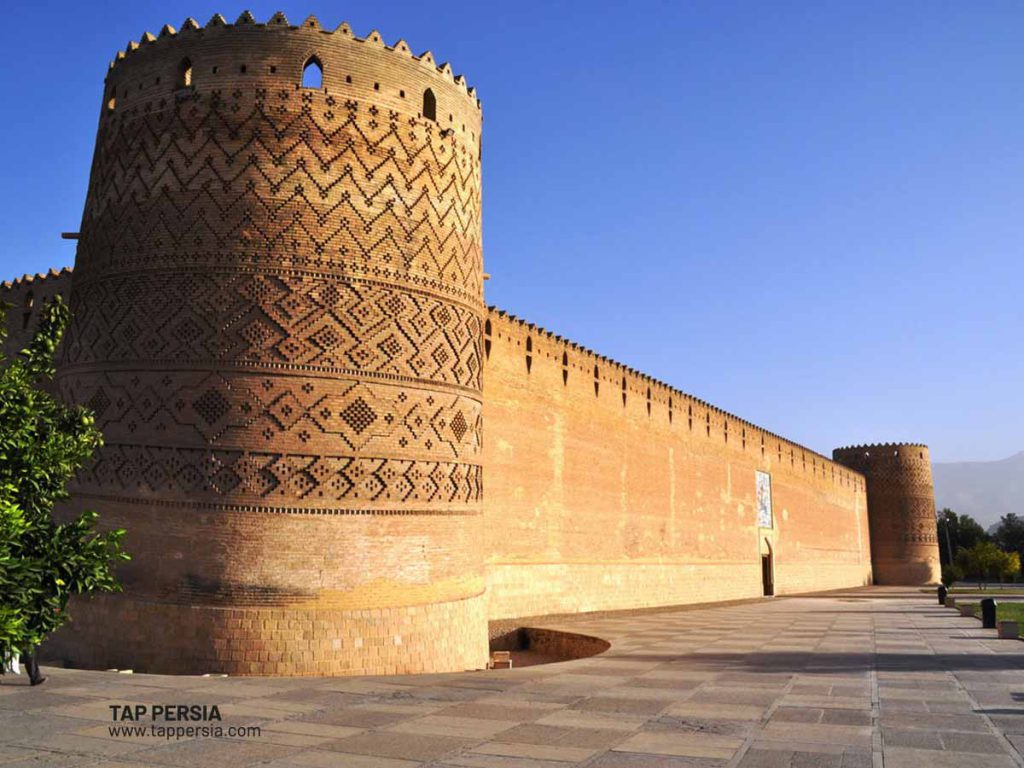
The Arg of Karim Khan, which was established after the Zand Empire but before the Qajar Dynasty, continued to be important. It maintained its prominence as a representation of dominance and authority by serving as the home of the local tyrants. The architectural magnificence of the Arg survived the political upheaval, which is evidence of Karim Khan Zand’s lasting influence.
The Arg of Karim Khan During the Pahlavi Dynasty
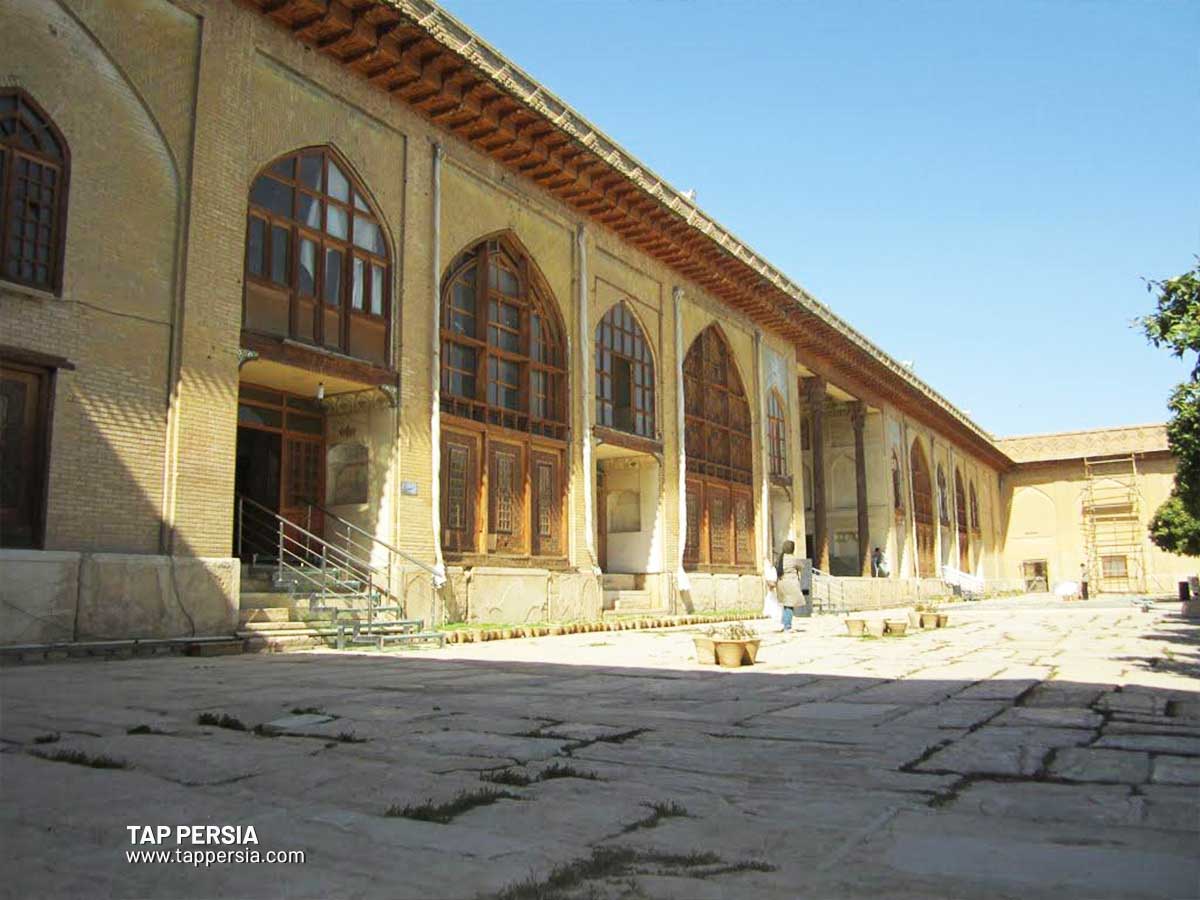
For the Arg of Karim Khan, the Pahlavi Rule resulted in a major alteration. A sharp contrast to its prior splendor as a royal home is the fact that it was turned into a jail. Despite this modification, the historical and architectural importance of the Arg was acknowledged, resulting in its listing in the National Heritage of Iran in 1972. To preserve and restore it, this was a significant step.
The Arg of Karim Khan, an Architectural Wonder
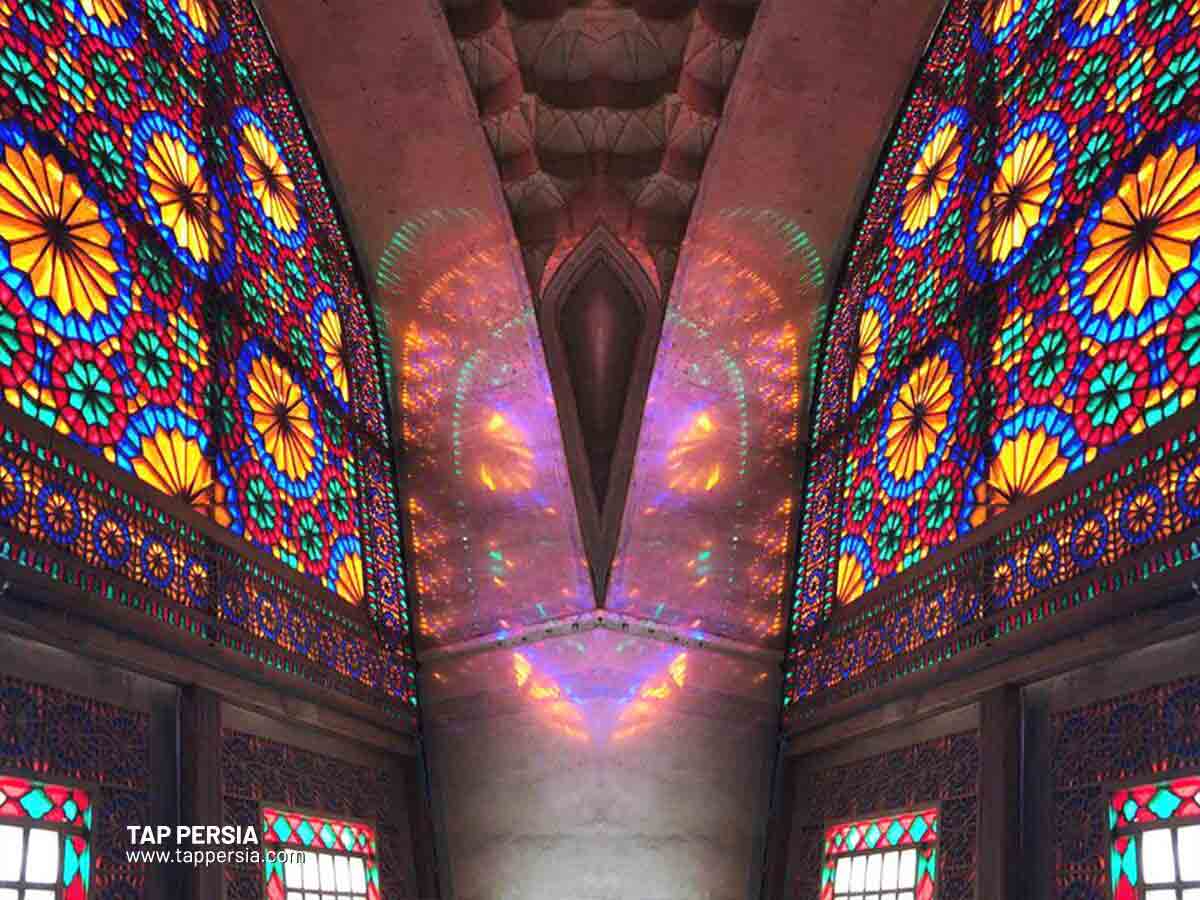
The Arg of Karim Khan is a masterpiece of architecture in addition to being a historical site. With features from the Isfahan School of Architecture as well as influences from the Seljuk and Safavid eras, its design and construction represent the rich architectural traditions of Iran. Here are the different places in this wonderful citadel:
The Arg of Karim Khan’s Special Characteristics
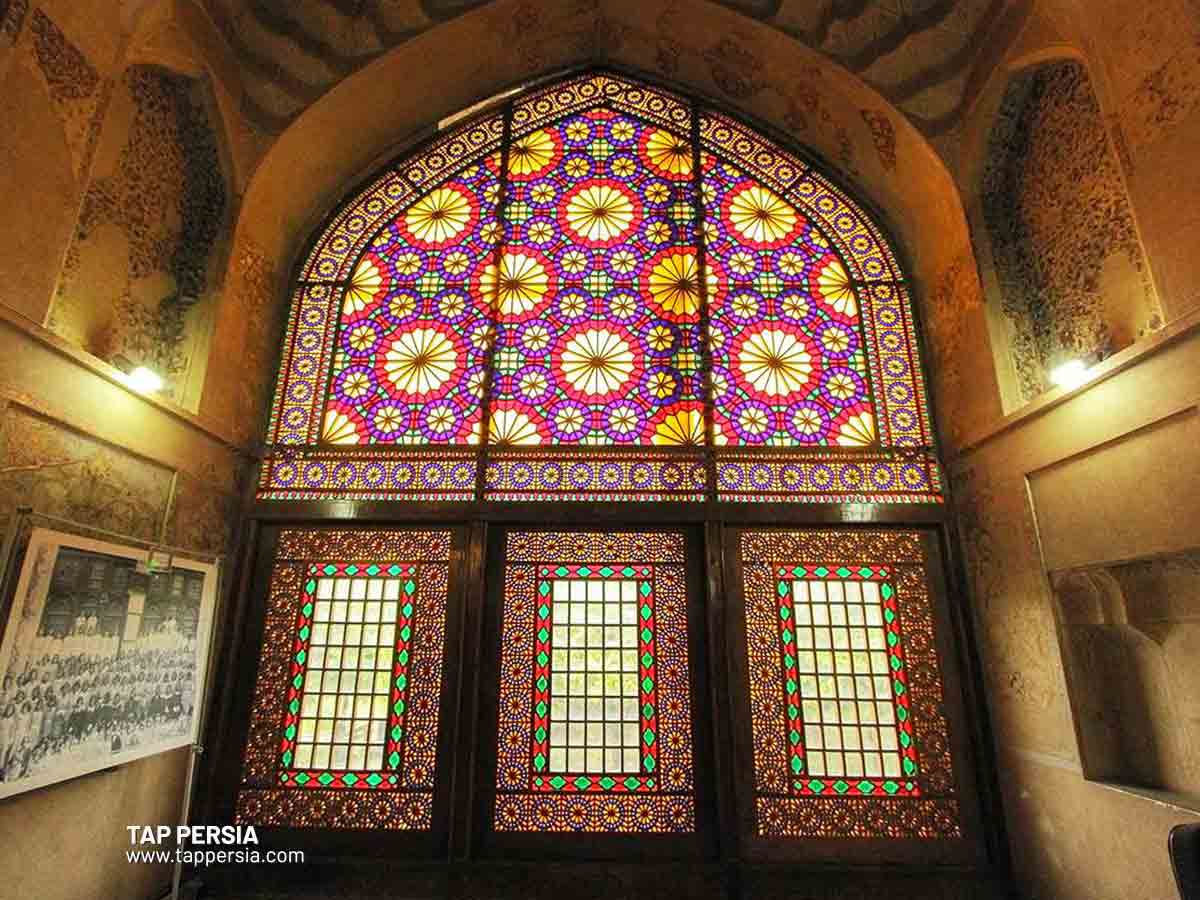
A monument to the time’s architectural brilliance is the Arg’s distinctive characteristics. Within a compound that is 12,800 m2 in size, the rectangular fortress has a 4,000 m2 land area. An impressive sight is the four tall walls that are joined by four 14-meter circular towers. Reflecting the dual function it served during the Zand Dynasty, the Arg’s design is a flawless fusion of military and residential architecture.
The Magnificent Walls of Karim Khan’s Arg
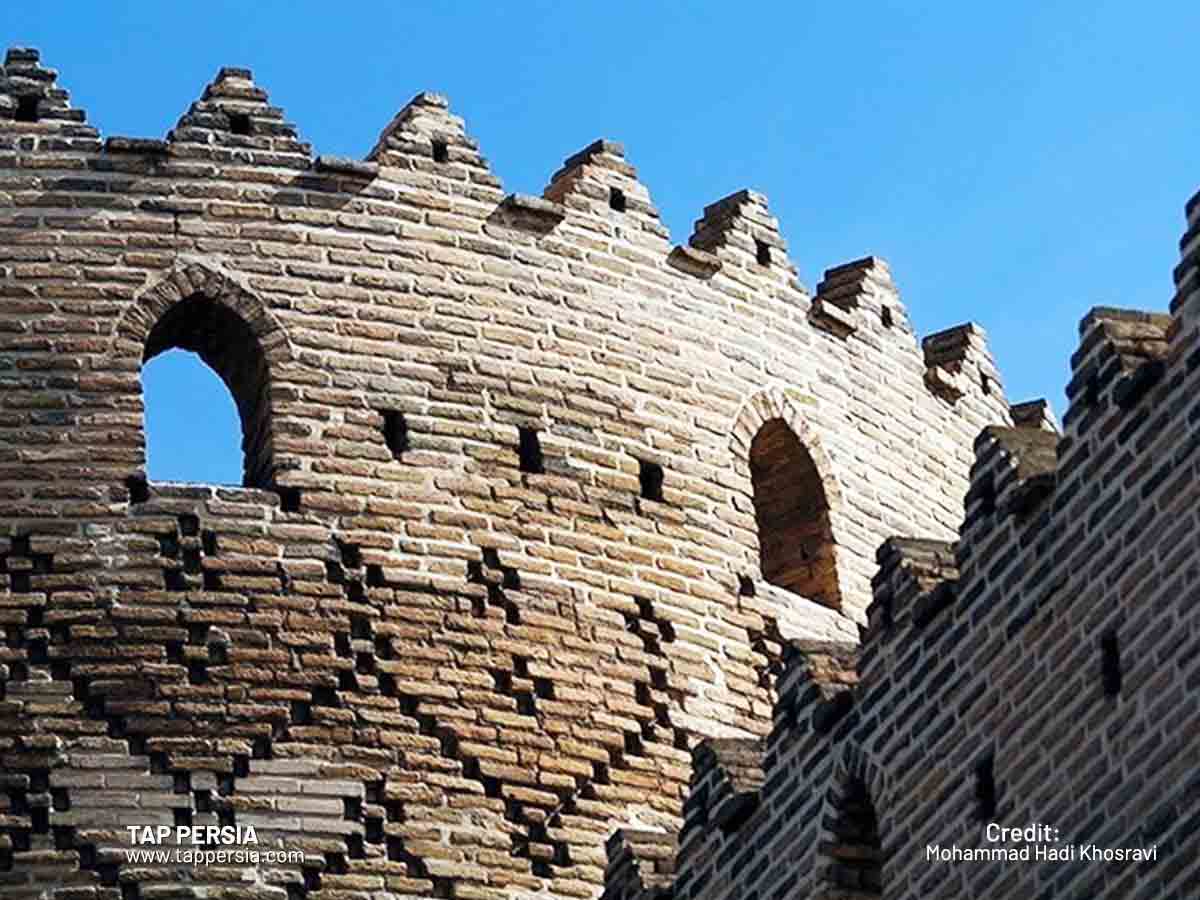
The outside of the citadel is built with military elements because of the military importance of building security and the ability for defense against attackers. This indicates that the exterior walls of the structure were only constructed for the inner castle’s defense.
Guards and shooters were stationed in watch towers and ramparts at the four corners of the citadel’s outer walls. Each one is around 14 meters tall, and the walls are up to 12 meters high. There are beautiful and artistic brickwork embellishments on the tower and ramparts of Karim Khan Citadel despite the military architectural aspects of the defense walls.
There are three distinct floors in the towers around Karim Khan Citadel, and a spiral staircase may be used to access the top floors. Each floor has two chambers, one for the troops to unwind and rest in and the other for storing weaponry.
*Interested in the majestic citadels of Iran? Our comprehensive article offers an insightful exploration into these historic fortresses. Perfect for enthusiasts and history buffs alike – take a moment to delve into the rich heritage of Iran’s citadels.
The Arg of Karim Khan’s Quarter
The Karim Khan citadel’s interior spaces are all connected to one another and are all accessible from one another. The furthest room on each porch does not need a person to leave the porch, therefore this is a benefit.
The fact that these rooms have entrances that face one another and a tiny hallway that is positioned in the space between the rooms serves as their connecting feature, which is also one of their most remarkable features.
The citadel’s western, southern and northern regions are where the residential structures are situated. They each have two stone columns or verandas on their front façade. A little pond that was once filled with water from Rokn Abad Qanat but is now dry is meant to be located in front of each veranda. Iranian creative methods, such as beautiful paintings and Muqarnas, are used to embellish the interiors.
The Shah Neshin (King’s Sitting Place) in The Arg of Karim Khan
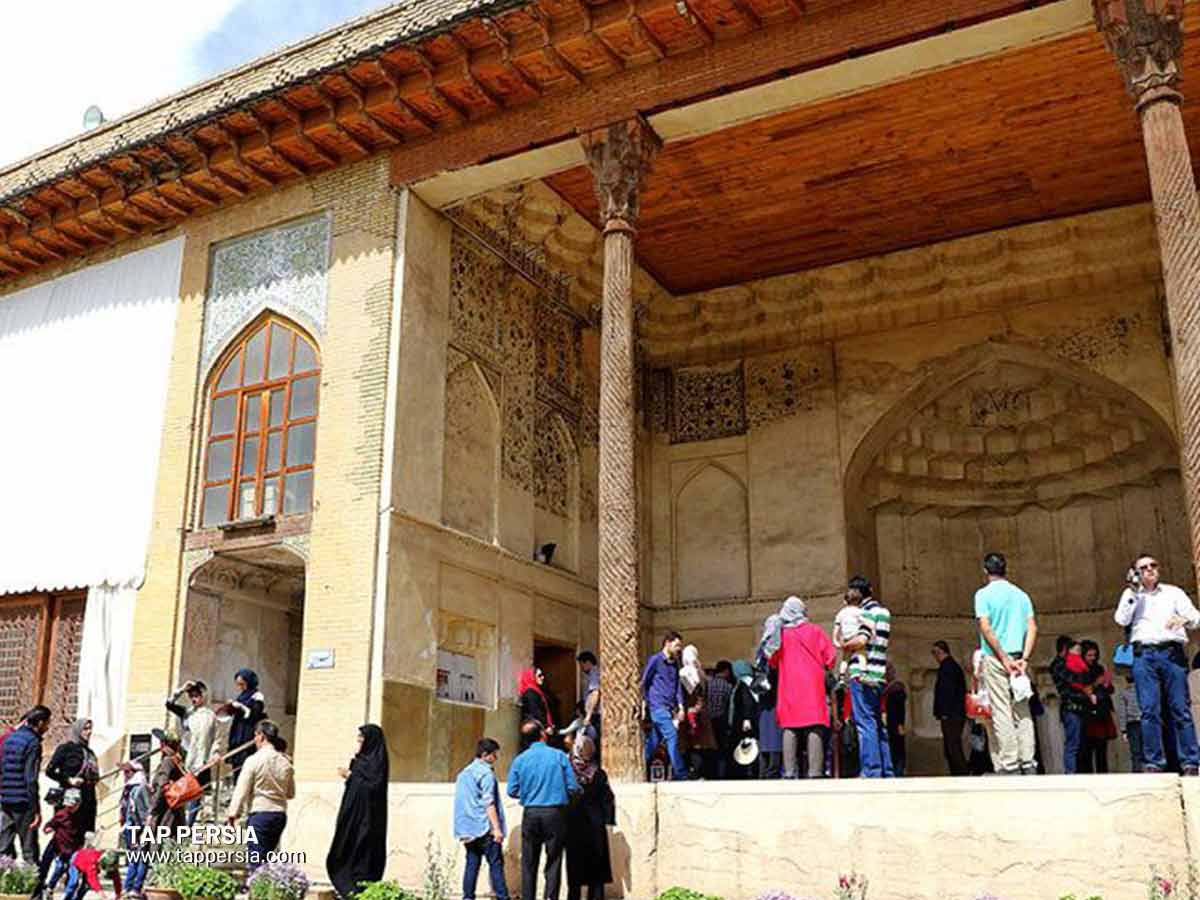
Shah Neshin is the name for the area of an old Iranian mansion’s interior that receives more sunlight, is larger than other areas, and has a higher roof. This is often a sizable room with three to five doors, known in the past as Se-dari or Panj-dari.
The northern, western and southern sides of the citadel are where you may find these chambers, each with a unique purpose. Some were leaving rooms, while others were eating rooms. People tended to stay in northern regions during winter since they were warmer owing to the angle of the sun’s rays.
The Bathhouse of The Arg of Karim Khan
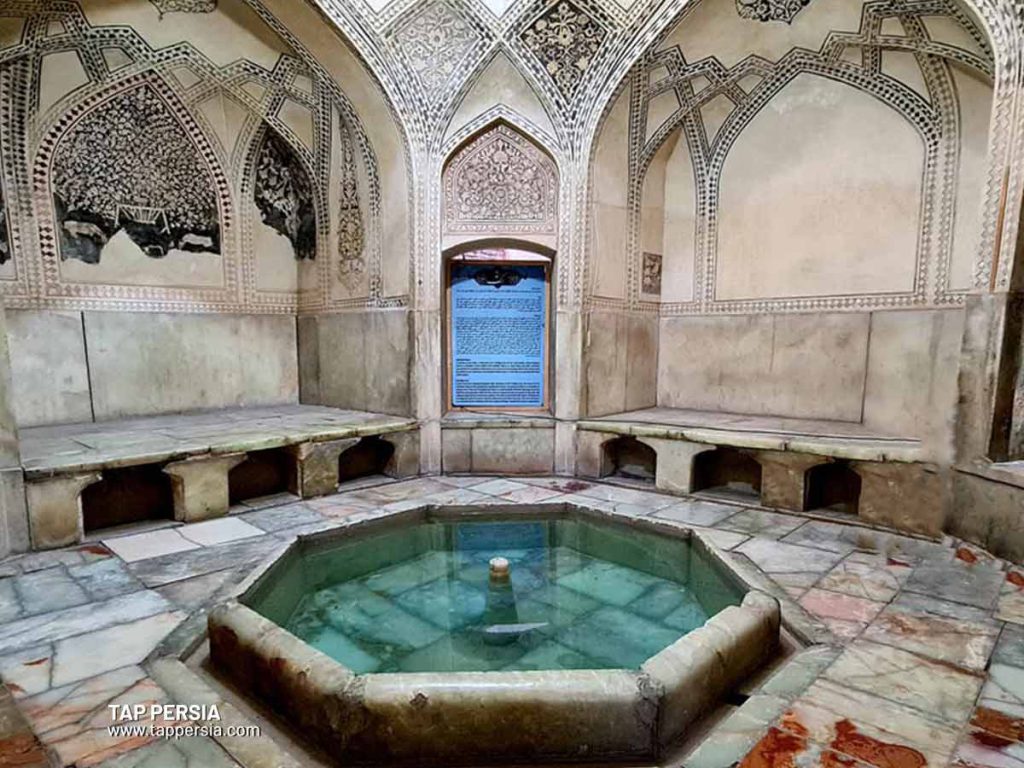
One of the first Persian hammams with a specific focus is the Arg bath. One of the sections of the Karim Khan fortress that has not been altered the most is the bath, which was solely used by the Karim Khan family. The Sarbineh, or coat room, of the hammam, as it was once known, had four platforms.
In the center of the pond lies a breathtaking octagonal pond. They warmed themselves after taking a bath by starting a fire in a bathroom corner. They also used this area to dry off and smoke hookah while sipping tea.
This citadel’s water supply system contains a lot of fascinating features. The Rokn Abad underground water channel, one of the most significant Persian Qanats of the period, provided water to this structure.
Traveling to The Arg of Karim Khan
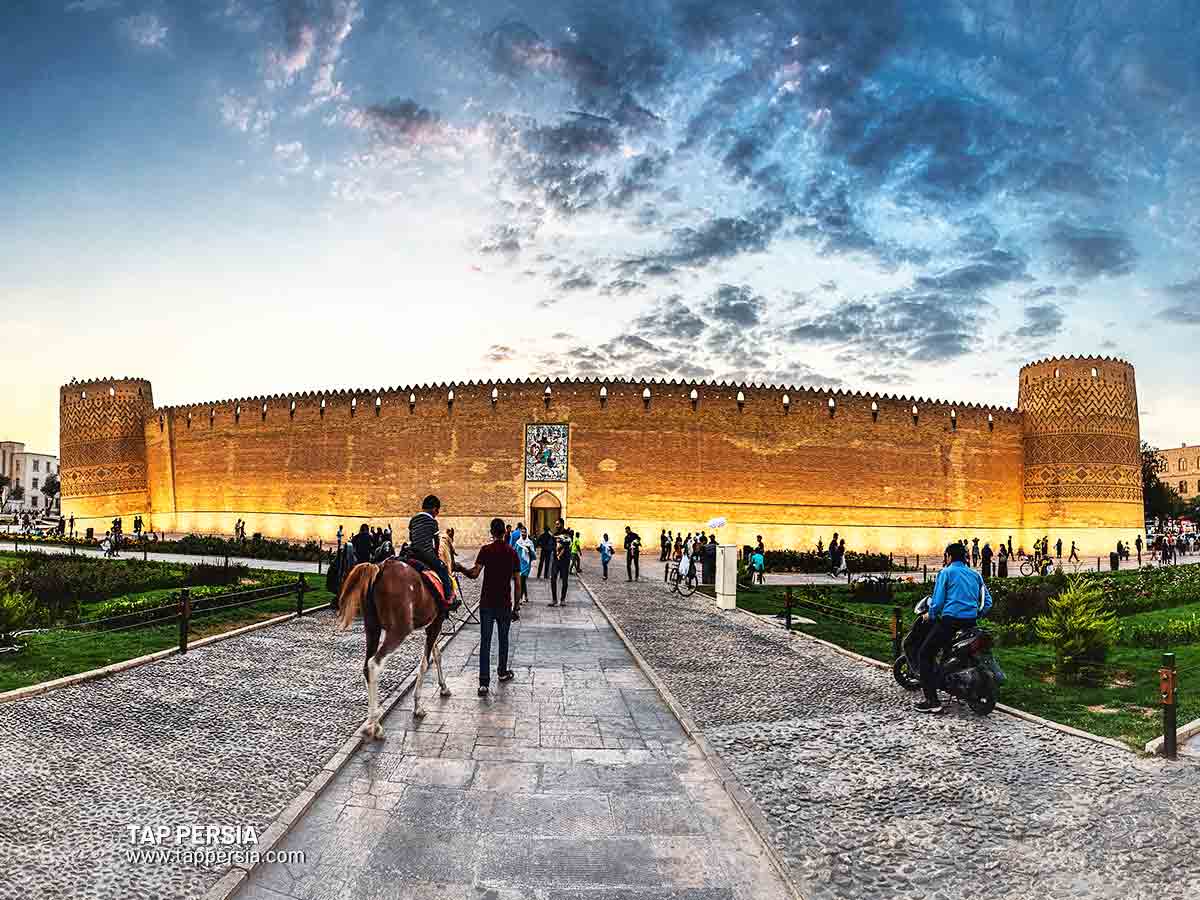
The Arg of Karim Khan offers a look into Iran’s rich historical and architectural legacy and is like going back in time when you visit. Before going to the Karim Khan Citadel, you should know the following:
Location and Accessibility of The Arg of Karim Khan
The Arg of Karim Khan is ideally situated on Karim Khan Zand Boulevard, next to Shohada Square, in the heart of Shiraz. With several nearby attractions, including the Pars Museum, Nasir-Ol Molk Mosque, Vakil Bath, Vakil Mosque, Vakil Bazaar and the Atiq Jame Mosque, it is conveniently located in a busy area.
Visiting Hours for The Arg of Karim Khan
In the spring and summer, the Karim Khan Citadel is available to guests from 08:00 to 20:00; in the autumn and winter, it is open from 08:00 to 17:00. To properly explore and appreciate this historical marvel, it is advised that you schedule your visit accordingly.
Hotels and Hostels Close to The Arg of Karim Khan?
You may spend a night or more at one of the following accommodations close to Arg-e Karim Khan: Golshan Traditional Hostel, Parhami Traditional House, Zandiyeh Hotel, Karim Khan Hotel or Arg Hotel.
Useful Tips to Know Before Visiting The Arg of Karim Khan
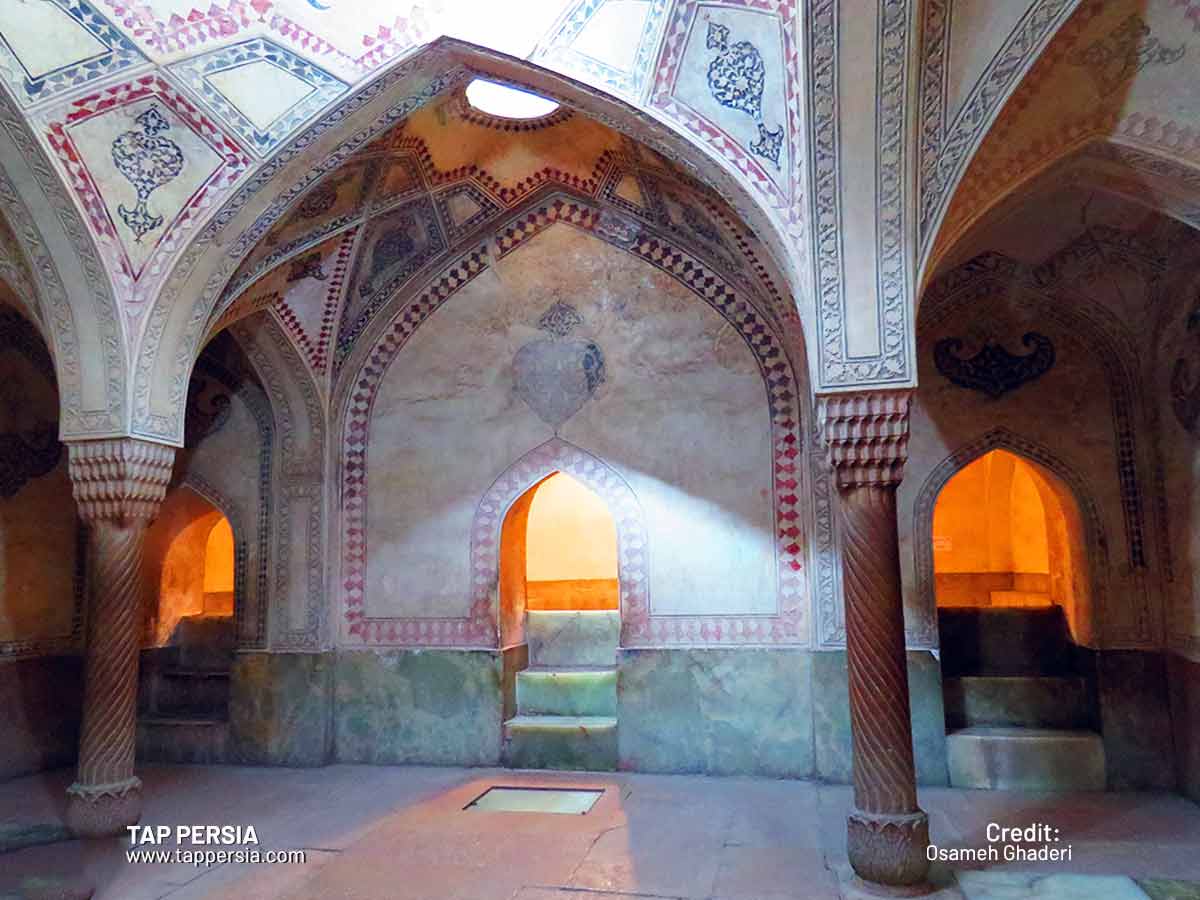
- If you wish to explore the entire Zand complex, start at Arge Karimkhan, then go to the Nazar Garden, and finally go to the Vakil Bathhouse. Check out the Vakil mosque after leaving the baths, then enter the bazaar through the mosque’s courtyard.
- Inside the pavilion of Nazar Garden, photography is not permitted.
- One of the few historically significant mosques in Iran, the Vakil Mosque, is open for visits during prayer times. You should respect people’s privacy and refrain from taking pictures if you happen to be in this mosque while it is time for prayer.
- Be sure to stop by the Saraye Moshir, a lovely and cozy bazaar of handicrafts.
- Don’t forget to visit one of Iran’s most renowned ice cream stores, located beside the Arg-e Karimkhan, to sample some classic ice cream, carrot juice, and Faloodeh (starch ice cream), which are popular delicacies in Shiraz.
Conclusion
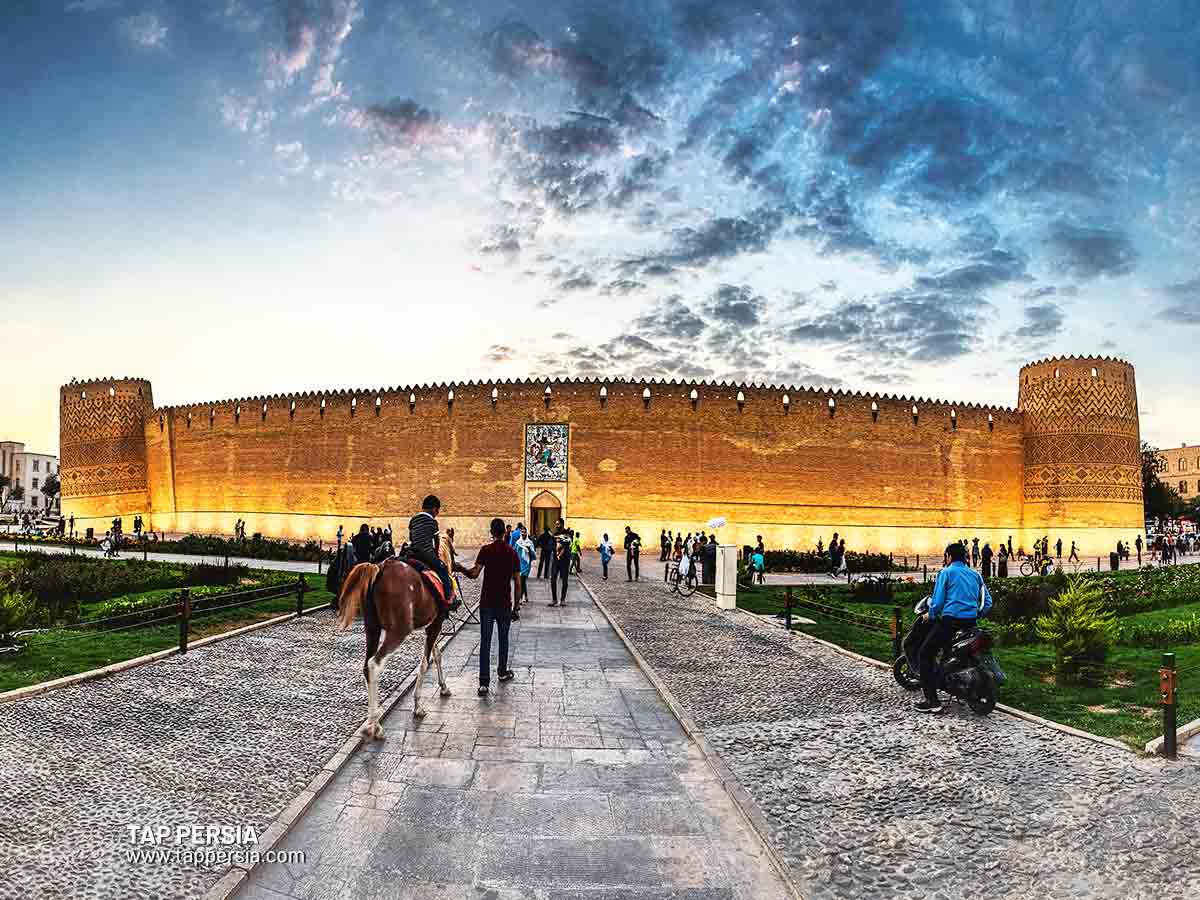
The Arg of Karim Khan, with its extensive history and magnificent architecture, is a symbol of Iran’s rich cultural legacy. It serves as a representation of the might of the Zand Dynasty and the goals of its creator, Karim Khan Zand. Exploring Iran’s past through a trip to the Arg provides a rare chance to see the architectural wonders of the era as well as glimpses into the life of the emperors.
Frequently Asked Questions
What is the Arg of Karim Khan?
Iran’s Shiraz is home to the historical citadel known as the Arg of Karim Khan or the Karim Khan citadel. It was constructed during the Zand Empire, when Karim Khan Zand was in charge, and it functioned as both his home and administrative hub.
Is the Zand Dynasty Kurdish?
Yes, the Zand Empire originated in Kurdistan. The dynasty’s first ruler was a tribal chief from the Kurdish nation named Karim Khan Zand.
Where did Karim Khan Zand come from?
Karim Khan Zand was born in the Kurdish clan of Zand, in what is known as Lorestan, in the western portion of Iran.
When was the Zand period in Iran?
Iran’s Zand era lasted from 1751 until 1794. It started with Karim Khan Zand’s tenure and concluded with Lotf Ali Khan’s demise as the final emperor of the Zand Empire.

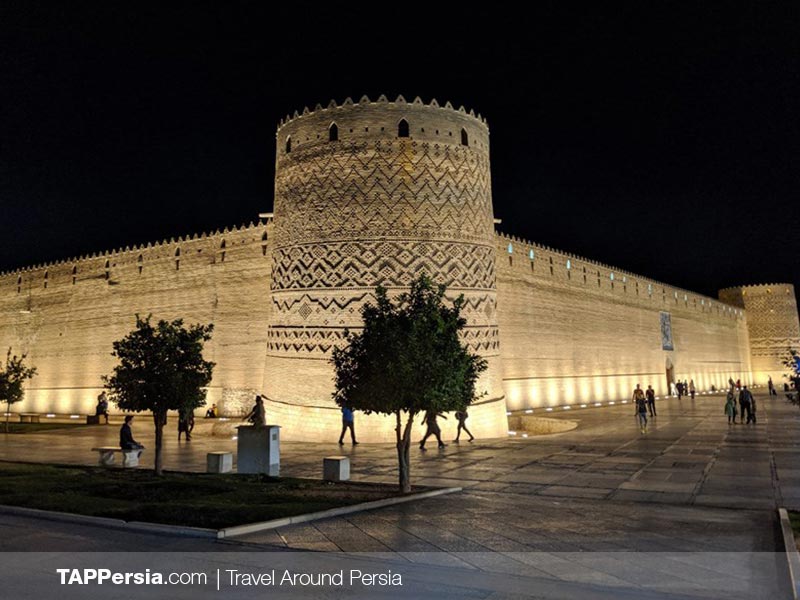


Comment (0)